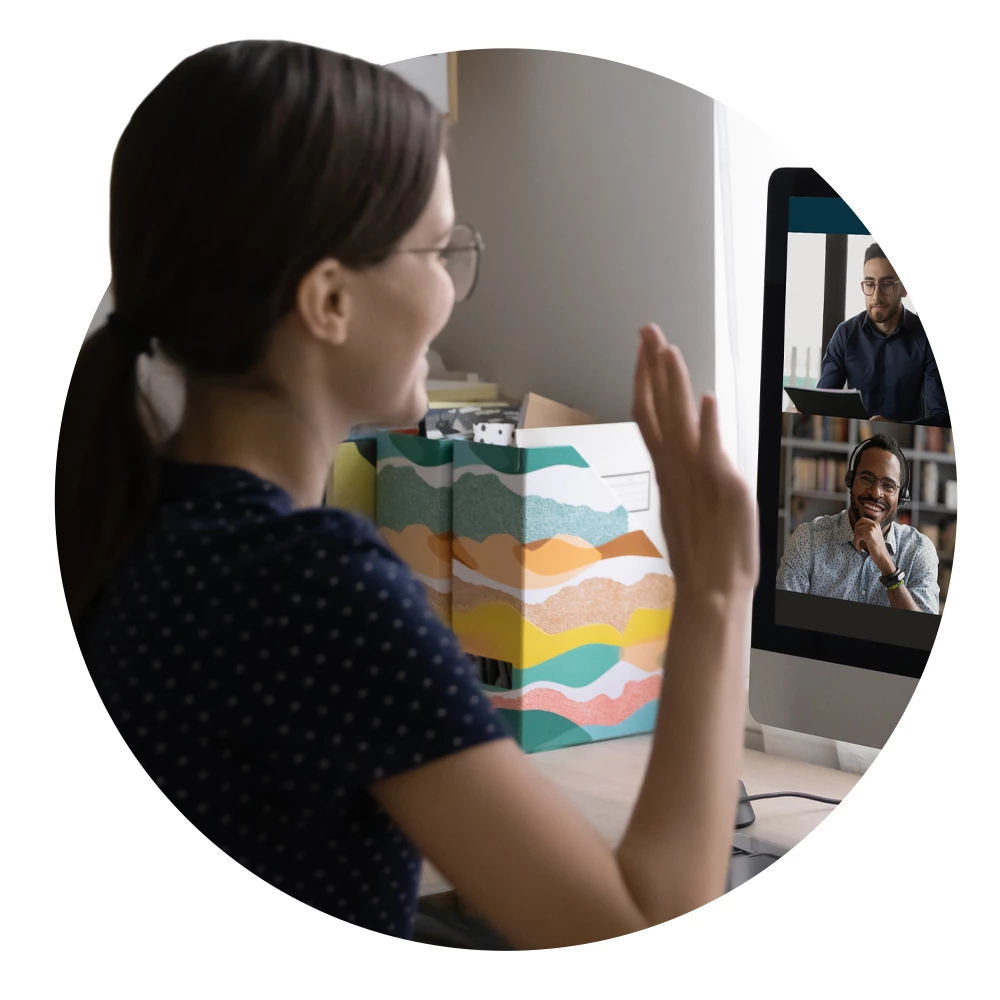When starting a new job, have you ever wished you could fast forward through the first few months, skipping over those awkward moments of confusion? You may not know where to park on your first day in the office or how to access your company Slack channel remotely. You might not have the office equipment you need or know who to ask to get it. And you might be unsure where a conference room is located or whether you’re expected to turn on your camera for virtual meetings.
The learning curve can be steep for new hires and it’s helpful to have someone to tap for inside knowledge. That’s where an onboarding buddy program comes in.
An onboarding buddy, defined
An onboarding buddy is a seasoned employee who helps a new team member acclimate to their new role, team, and company. They should share useful, socially-focused information such as:
- The best nearby coffee shop, lunch spots, or after-work happy hours
- Good Zoom backgrounds to use and how to change them
- Unspoken kitchen rules (Ben’s soymilk is not communal… don’t find out the hard way!)
- Which communication tools to use and when
- Company lingo
- Just how informal are Casual Fridays? (Leopard print leggings—Yea or Nay?)
The role of a buddy is different to that of a mentor, manager, or coach. Buddies are not responsible for a new hire’s employee development—goal setting and formal training are responsibilities exclusively for a mentor or manager.
Instead, general office-related questions are directed towards the buddy, so that manager-employee time is saved for more important matters. The buddy relationship is far less formal, with its core purpose being encouragement and friendship.
Playing matchmaker in a sustainable buddy program
A buddy should be an engaged employee who understands organizational values and goals, and can translate these to new hires. Ask for volunteers who have been with the company for at least three months, will be available during the new hire’s first two weeks, and work in the same department as the new employee.
Having trouble rounding up volunteers? Create simple incentives for joining the buddy program, such as a license to splurge at that (overpriced) gourmet coffee shop during buddy meetings. The temptation of an almond croissant is more powerful than you might think.
A good buddy program will breed new volunteers to welcome future hires. A positive experience encourages employees to pay it forward and they’ll be eager to help out the next newbie when their buddy program ends.
Make the most of the buddy program with routine meetings
The structure of a buddy meeting should be relaxed—coffee, lunch, a sit-down in the common area. For remote workers, a simple Zoom session or Google Hangout will do the trick and you can encourage team members to expense a coffee or a meal of their choice.
Arrange the buddies to have their first meeting before your new employee begins work. This will calm first-day nerves and offer new employees a friendly resource they can access straightaway.
Depending on how long your buddy program lasts (we suggest 3-6 months), meeting frequency might be:
- Once a week for the first month
- Twice a month for months 2-3
- Once a month for months 4-6
- One end of program meeting to recap and explore your onboarded employee’s interest in becoming an onboarding buddy
A time allocation isn’t necessary, given the relaxed nature of these meetings. It’s fully up to the duo whether they’d like to chat over a 15-minute coffee or enjoy two hours of after-work drinks.
Gather feedback to optimize your buddy program
Implement short, monthly surveys to gain valuable feedback on what is and isn’t working so you can improve your buddy program and elevate your early employee experience.
Survey questions to consider:
New hire
- In your own words, how would you describe the business’ goals and vision?
- Do you feel comfortable around your new team members?
- How would you describe the organization’s overall attitude?
- Have you been comfortable asking your buddy any questions that arise?
Buddy
- Do you feel the new hire has a solid understanding of company goals and vision?
- Do you think the new hire is adapting to company culture?
- How has the new hire’s confidence progressed?
- Over the past month, have the new hire’s queries increased, decreased, or remained constant?
The end of program survey should review overall satisfaction and effectiveness, with compulsory comments on program strengths along with suggestions for improvement. Candid feedback will guide you in polishing your program so that new hires are getting the support, information, and friendship they need to excel.
Final thoughts on creating a successful buddy program
Seventy per cent of employees who had a successful onboarding experience said they had “the best possible job.” These employees were 2.6 times more likely to be extremely satisfied with their workplace and far more likely to stay. Further, building meaningful relationships was cited as the most valuable aspect of an employee onboarding program for many.
A buddy program can be an instrumental part of a strategic onboarding process that helps you engage and retain your team members long-term.
By buddying up with a seasoned employee, new hires gain insight to inside information and receive the encouragement they need to get comfortable in a new workplace. Quickening this transitional period leads to a faster ramp-up time for new employees so they can reach full productivity faster.
Written by Claire Moloney Claire is an enthusiastic and meticulous content writer whose passion is to support growth and continual learning for everyone.



